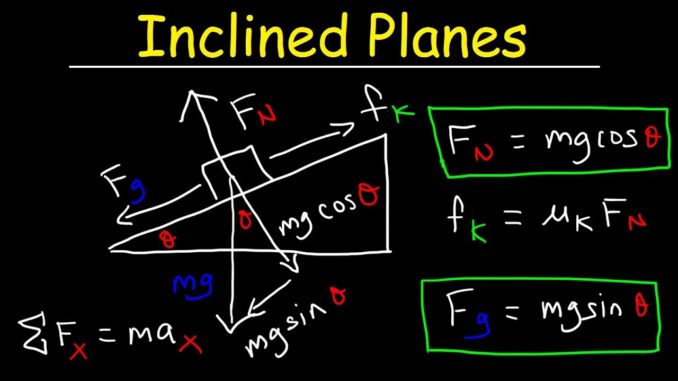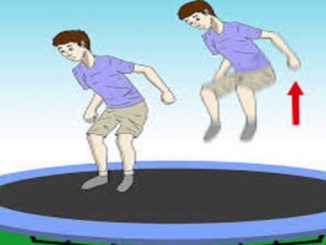
If a ball is rolled down on an inclined plane, the total energy is conserved. Potential Energy is converted to Kinetic energy as the ball rolls down. It will hence be interesting to see if energy is conserved and so if MGH = 0.5 * M * V * V is the motion on an inclined plane which is inclined at 60 degrees to the horizontal different from an inclined at 30 degrees to the horizontal. It is very evident that the length of the inclined plane for a height H for the two case where the side would be inclined at 30 degrees and 60 degrees wrt the horizontal would be H * Sin (30) and H * Sin (60).
For a free fall from height H, the time of travel is given by the equation H = 0.5 g * t * t where t is the time taken for the ball to fall through the height H. So t = sqrt (2 * H / g). In the case of the inclined plane if H is the height the length of the side is H / Sin (theta) where theta is the angle made by the inclined side with the horizontal. Substituting H / Sin (Theta) instead of H in the equation we get H / Sin (Theta) = 0.5 * g * t * t, so t = sqrt (2 * H / g * Sin (theta)).
For a height of 10 meter in the case of a free fall it takes sqrt (2 * 10 / 9.8) is equal to 1.43 seconds. In the case of an inclined plane inclined at 30 degrees wrt the horizontal, the time taken is sqrt (20 / g * 0.5) = sqrt (20 / 4.9) = 2.02 seconds. In the case of the inclined side inclined at 60 degrees to the horizontal the time taken is t = sqrt (2 * 10 /9.8 * 0.866) = 2.37 seconds. It can be easily seen that the time taken increases as and when the length of the inclined side increases.
In the case of the free fall the acceleration an object falling down experience is due to gravity or in other words g = 9.8 m / sec * sec. In the case of motion along the inclined plane the net acceleration can be determined by drawing force diagrams. The only force acting on the body during its slide down an inclined place is the natural force of gravity. So if the downwards force is mg then the component of the force along the plane is mg * sin (theta) and the component of the force normal to the object is mg * cos (theta).
Essentially when we used distance of the inclined side in the equation of motion to derive the time of travel we used an adjusted downwards acceleration due to gravity.
Proudly WWW.PONIREVO.COM
Source by Srinivasa Gopal



